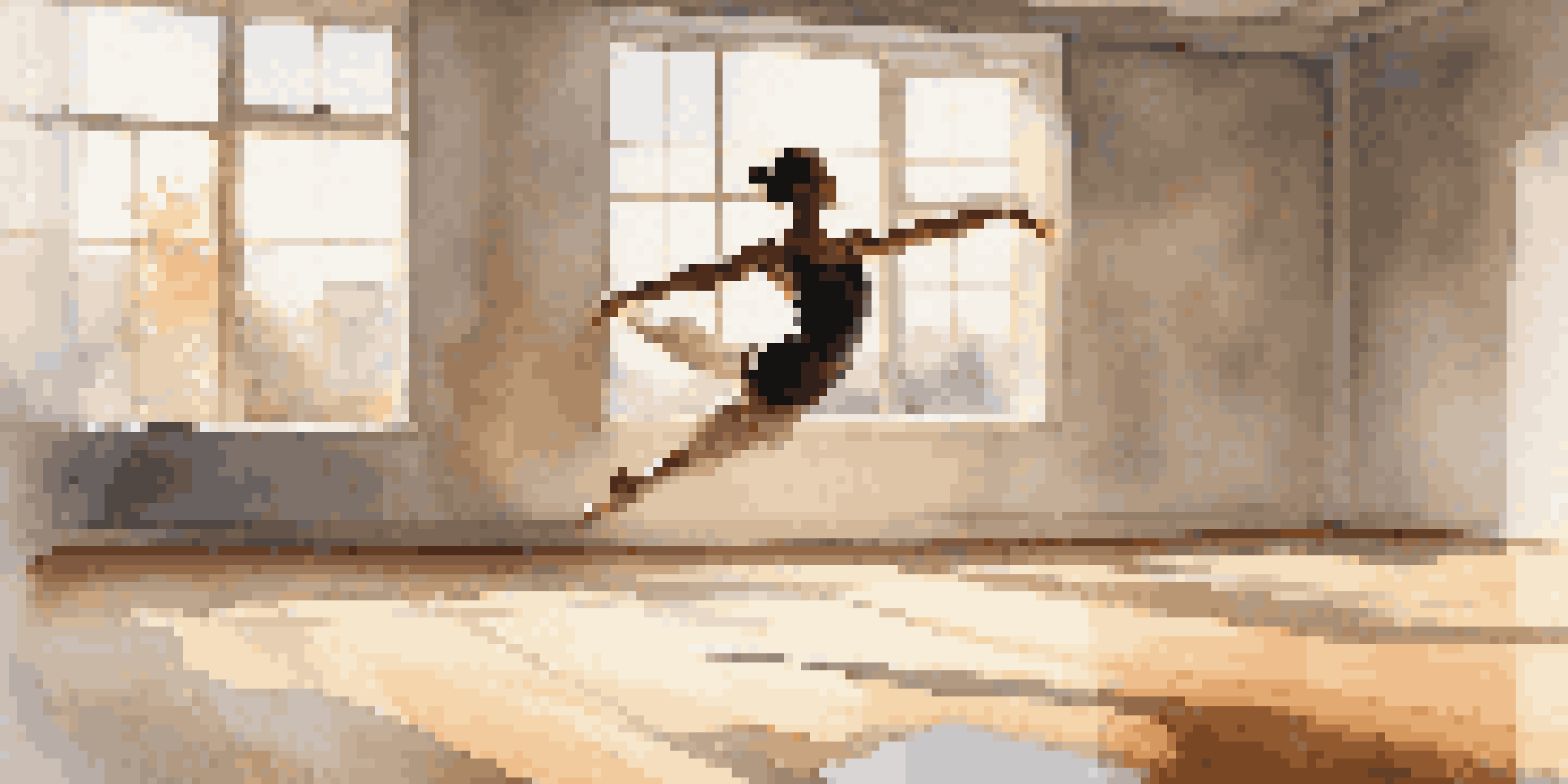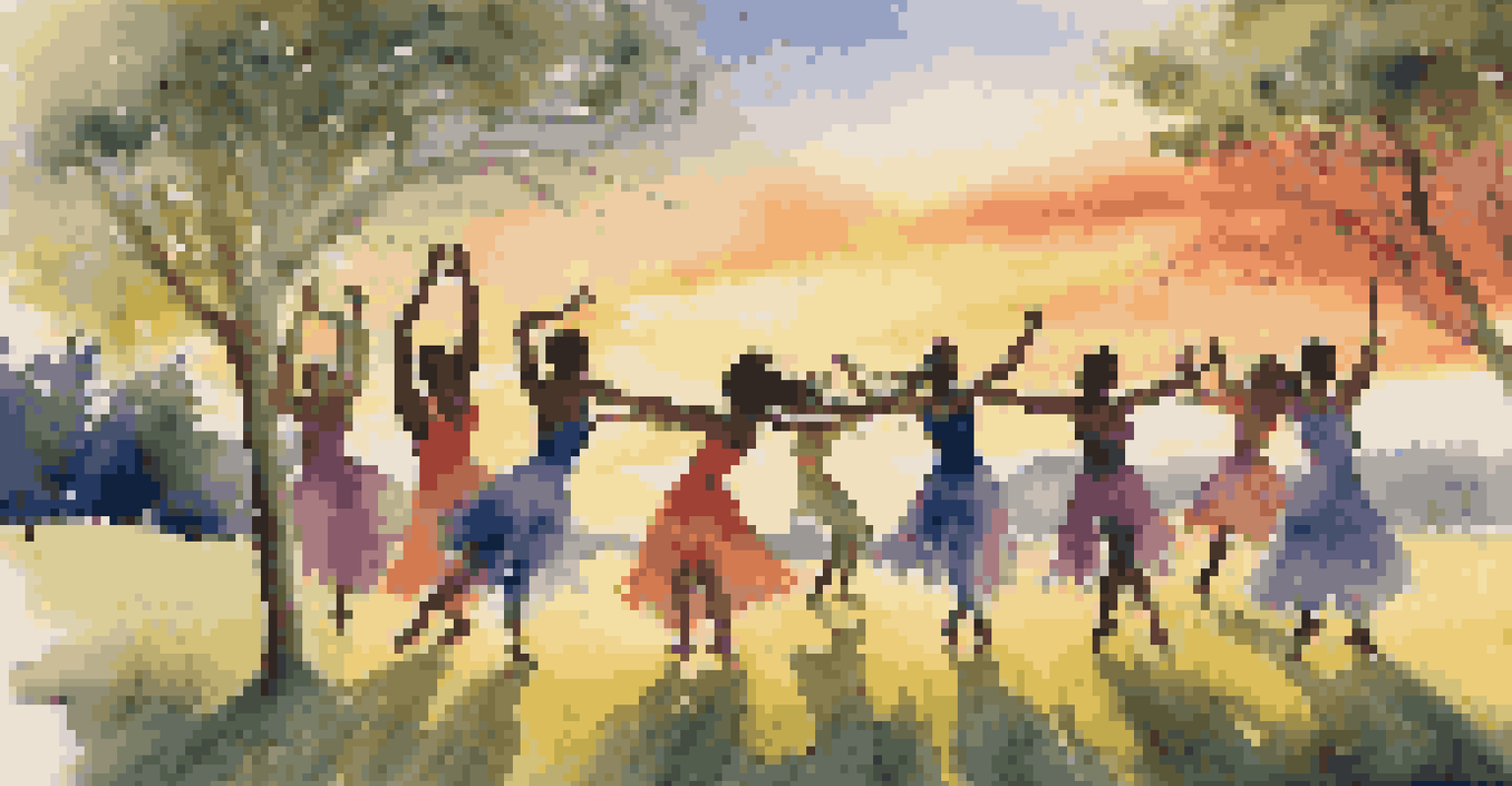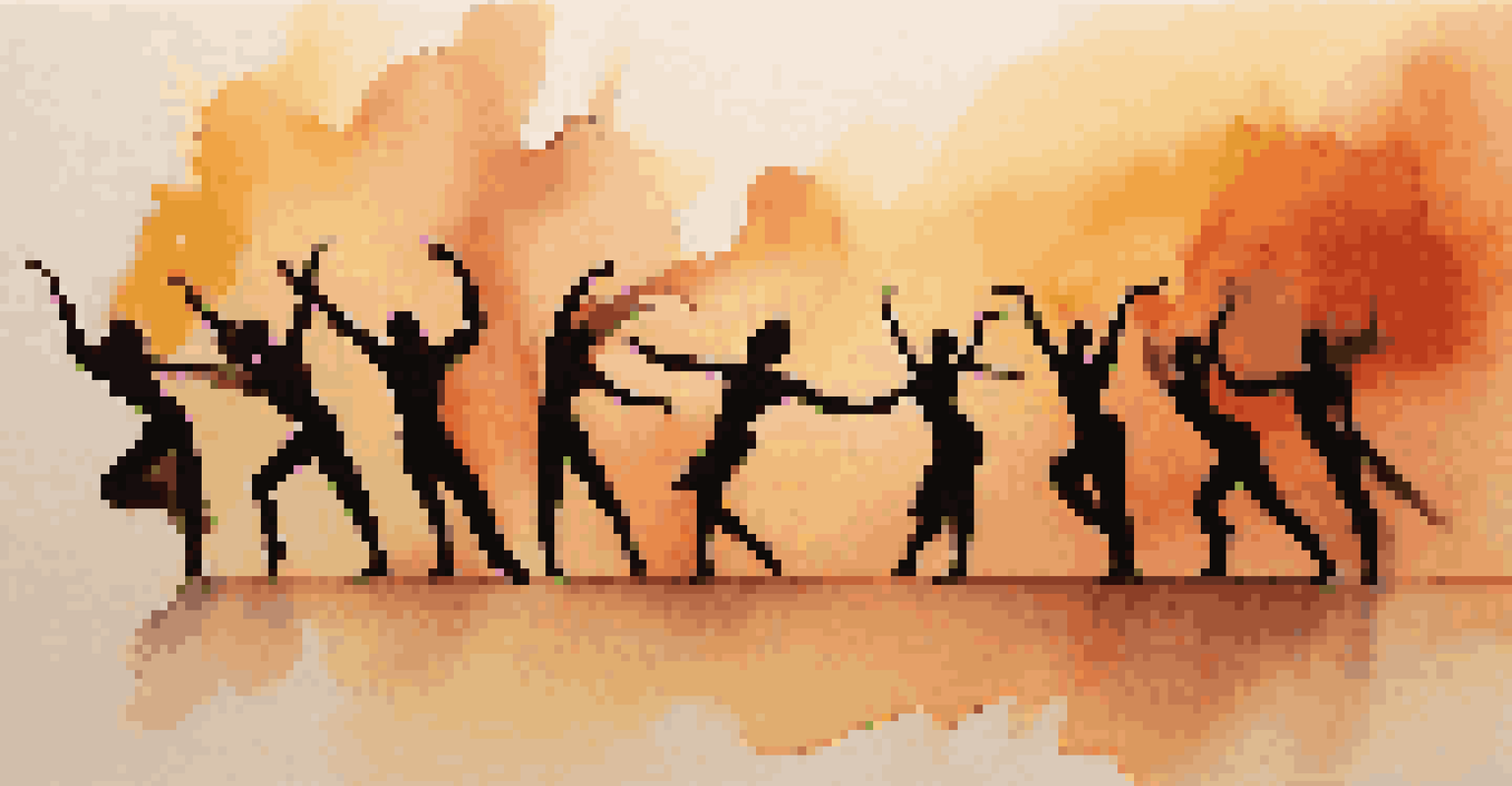Physicality and Improvisation in Contemporary Dance

Understanding Physicality in Dance: The Core of Movement
Physicality in dance refers to the tangible expression of movement through the body. It encompasses not only physical skills but also the energy, intention, and emotion that dancers convey. Imagine a painter who uses bold strokes and colors to express feelings; similarly, dancers use their bodies as instruments to communicate ideas and emotions.
Dance is the hidden language of the soul.
In contemporary dance, physicality takes on various forms, from fluid motions to sharp, staccato movements. This diversity allows for a rich tapestry of expression, where every dancer's unique physicality contributes to the overall performance. Just as every artist has a distinct style, each dancer’s approach to physicality offers a new perspective and experience.
Ultimately, understanding physicality is crucial for dancers, as it forms the foundation upon which improvisation and creativity can flourish. It’s like building a house; without a solid foundation, the creativity of design cannot take shape. Thus, mastering physicality becomes essential for any dancer hoping to explore the realms of contemporary dance.
The Role of Improvisation in Contemporary Dance
Improvisation in contemporary dance is the spontaneous creation of movement without pre-planned choreography. This practice allows dancers to tap into their instincts and emotions, creating a unique performance that reflects their current state of mind. Think of it as jazz music, where musicians riff off each other, creating something fresh and dynamic with every note.

Incorporating improvisation into dance not only enhances creativity but also fosters a sense of freedom. Dancers learn to trust their bodies and make decisions in the moment, leading to unexpected and often breathtaking results. This unpredictability can resonate deeply with audiences, as they witness authentic expressions of artistry unfolding before their eyes.
Physicality Fuels Dance Expression
Physicality in dance encompasses not just movement but also the energy, intention, and emotion that dancers convey.
Moreover, improvisation encourages collaboration among dancers, allowing them to respond to each other's movements in real time. This interaction can create a powerful synergy, much like a conversation where each participant builds on the other’s ideas. In this way, improvisation becomes a vital component of contemporary dance, enhancing both individual artistry and group dynamics.
Bridging Physicality and Improvisation: A Seamless Connection
The intersection of physicality and improvisation in contemporary dance creates a rich environment for exploration. Dancers often draw from their physical experiences to inform their improvisational choices, making the two elements deeply intertwined. It’s similar to how a writer uses their life experiences to inspire storytelling—each movement is rooted in the dancer’s unique physicality.
Improvisation is the ability to create something out of nothing.
As dancers improvise, they rely on their understanding of physicality to guide their movements. This connection allows for a more organic flow, where the body responds instinctively to the music and space around it. Just as a river flows around rocks, a dancer navigates their environment, creating a dialogue between their body and the world.
This relationship not only enhances the performance but also deepens the dancer’s self-awareness. By understanding how their body moves and responds, dancers can push their limits and explore new possibilities. Ultimately, the bridge between physicality and improvisation serves as a powerful catalyst for growth and innovation in contemporary dance.
The Importance of Space in Dance Improvisation
Space plays a crucial role in both physicality and improvisation in dance. Dancers must be aware of their surroundings, including the dimensions of the performance area and the presence of other performers. This spatial awareness can significantly influence the direction of their movements, much like how a sailor navigates their ship through changing tides.
In improvisation, the use of space often dictates the style and energy of the performance. Dancers may choose to fill the space with expansive movements or explore smaller, more intimate gestures. This decision-making process reflects the dynamic nature of improvisation, where the dancer’s choices are influenced by the immediate environment.
Improvisation Enhances Creativity
Improvisation in contemporary dance allows dancers to create spontaneous movements that reflect their emotions and instincts.
Furthermore, understanding how to manipulate space can enhance the visual impact of a performance. When dancers engage with space creatively, they draw the audience in, creating a captivating experience. Just as a sculptor shapes their material, dancers shape the space around them, transforming it into a canvas for their physical expression.
Emotional Expression Through Physicality and Improvisation
One of the most compelling aspects of contemporary dance is its ability to convey deep emotions through physicality and improvisation. Dancers use their bodies to express feelings that words often cannot capture, making their performance a visceral experience for the audience. It’s akin to how a musician can evoke joy or sadness through melody alone, without lyrics.
In this context, improvisation becomes a tool for authentic emotional exploration. Dancers may find themselves tapping into personal experiences or collective themes, allowing their movement to flow naturally in response to those emotions. This authenticity resonates powerfully with viewers, as they witness a raw and genuine portrayal of human experience.
Moreover, the combination of physicality and improvisation creates an emotional landscape that is constantly shifting. Just as life is filled with ups and downs, so too are the movements of a dancer. This ebb and flow captivates audiences, drawing them into a shared emotional journey that reflects the complexities of existence.
Training for Physicality and Improvisation in Dance
Training in contemporary dance often emphasizes the development of both physicality and improvisation skills. Dancers engage in a variety of exercises designed to enhance their body awareness, flexibility, and strength, laying the groundwork for expressive movement. Think of it as an athlete honing their skills; each practice session builds upon the last, creating a more refined and powerful performer.
Additionally, improvisation techniques are frequently incorporated into training regimens, encouraging dancers to explore their creativity and spontaneity. Workshops and classes may focus on guided improvisation, where dancers learn to respond to prompts and stimuli. This playful approach not only builds confidence but also nurtures a deeper connection between body and mind.
Space Shapes Dance Performance
Spatial awareness plays a crucial role in dance, influencing movement styles and enhancing the visual impact of performances.
Ultimately, effective training blends physicality and improvisation, preparing dancers for the unpredictable nature of contemporary performance. It’s about equipping them with the tools to navigate their artistic journey, allowing them to express themselves freely and authentically. In this way, training becomes a crucial stepping stone towards mastery in contemporary dance.
The Future of Physicality and Improvisation in Dance
As contemporary dance continues to evolve, the roles of physicality and improvisation will undoubtedly adapt as well. Dancers and choreographers are continually experimenting with new styles, integrating technology, and exploring diverse influences from various cultures. This ever-changing landscape invites fresh interpretations and expressions of movement.
Moreover, the rise of social media and digital platforms has transformed how dance is shared and experienced. Dancers can now reach global audiences, showcasing their improvisational skills and unique physicality in real-time. This connectivity opens doors for collaboration and inspiration, fostering a vibrant dance community that transcends geographical boundaries.

Looking ahead, the future promises exciting innovations in the realms of physicality and improvisation. As artists push boundaries and challenge conventions, we can anticipate a rich tapestry of movement that reflects the complexities of modern society. Ultimately, the ongoing exploration of these elements will continue to shape the landscape of contemporary dance for years to come.